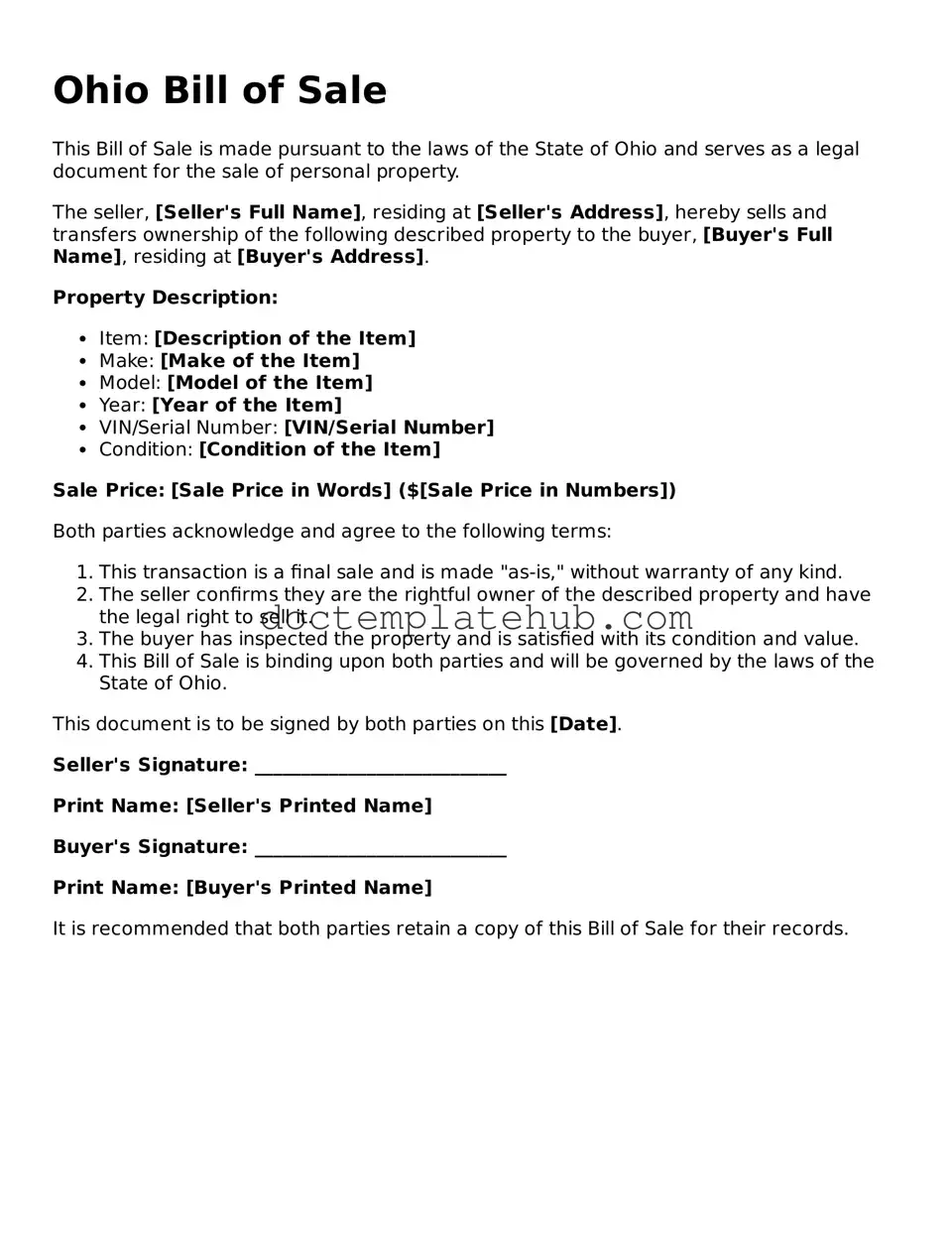What is a Bill of Sale in Ohio?
A Bill of Sale in Ohio is a legal document that records the transfer of ownership of personal property from one person to another. It serves as proof of the transaction and includes details about the item being sold, the buyer, and the seller.
When do I need a Bill of Sale?
You need a Bill of Sale when you sell or purchase items like vehicles, boats, or other valuable personal property. It is especially important for high-value items or when the buyer and seller do not know each other well.
What information should be included in the Ohio Bill of Sale?
The Ohio Bill of Sale should include the names and addresses of both the buyer and seller, a description of the item being sold (including serial numbers if applicable), the sale price, and the date of the transaction. Signatures of both parties are also necessary.
Is a Bill of Sale required for vehicle sales in Ohio?
Yes, a Bill of Sale is required for vehicle sales in Ohio. It helps in the registration process and provides proof of ownership. The Ohio Bureau of Motor Vehicles (BMV) may require this document when transferring the title.
Can I create my own Bill of Sale?
Yes, you can create your own Bill of Sale. However, it is important to ensure that all required information is included and that it complies with Ohio laws. Templates are available online, or you can consult with a legal professional for guidance.
Do I need to have the Bill of Sale notarized?
In Ohio, notarization of a Bill of Sale is not required by law. However, having it notarized can add an extra layer of protection and may be beneficial if there are disputes in the future.
What if the item being sold is a vehicle?
If the item is a vehicle, the Bill of Sale should include specific details like the vehicle identification number (VIN), make, model, year, and odometer reading at the time of sale. This information is crucial for the title transfer process.
What happens if I lose my Bill of Sale?
If you lose your Bill of Sale, it can be difficult to prove ownership of the item. It is advisable to keep a copy in a safe place. If necessary, you may be able to create a new Bill of Sale, but both parties must agree and sign it again.
Is a Bill of Sale legally binding?
Yes, a Bill of Sale is a legally binding document once both parties have signed it. It can be used in court to prove ownership and the terms of the sale if disputes arise.
Where can I find an Ohio Bill of Sale form?
You can find an Ohio Bill of Sale form online through various legal websites, or you may obtain one from a local office supply store. Additionally, some legal aid organizations may provide free templates.
